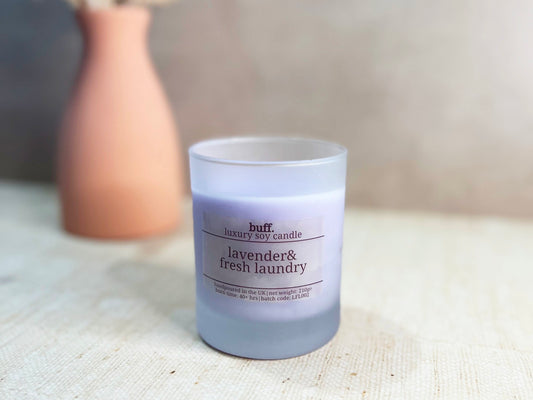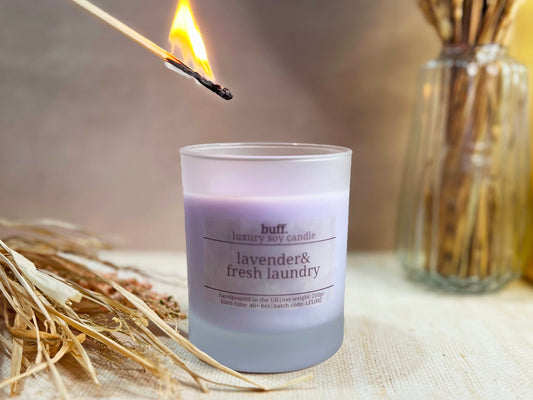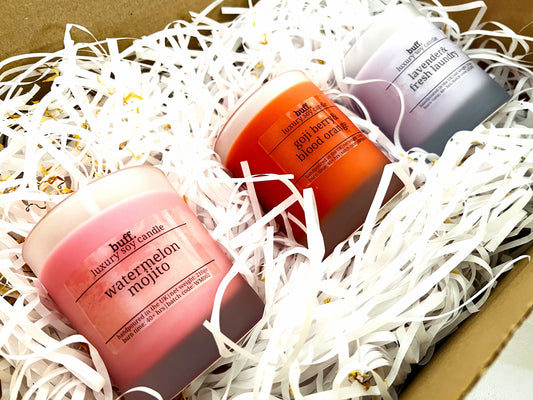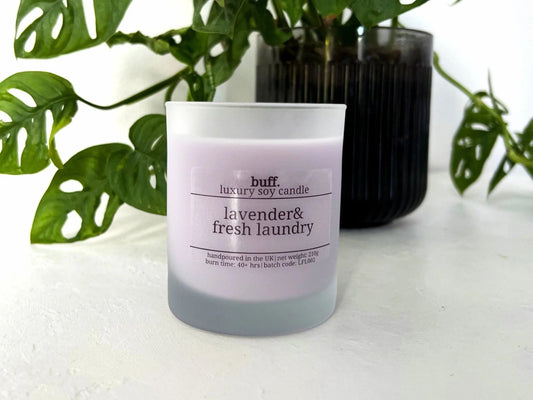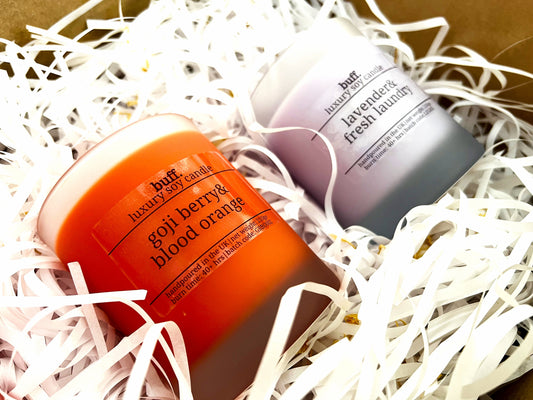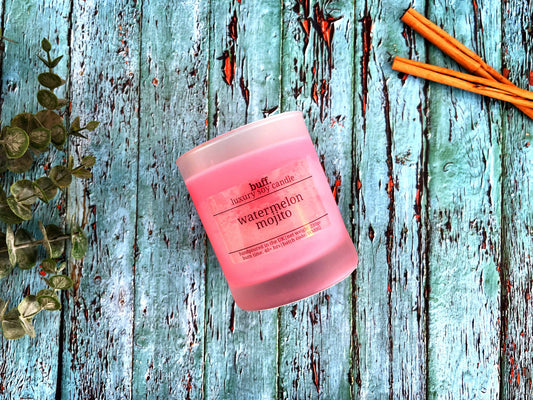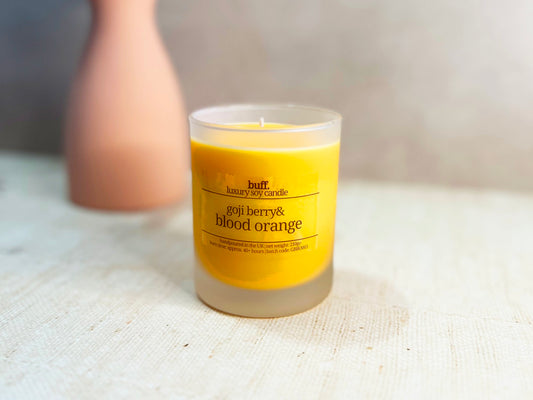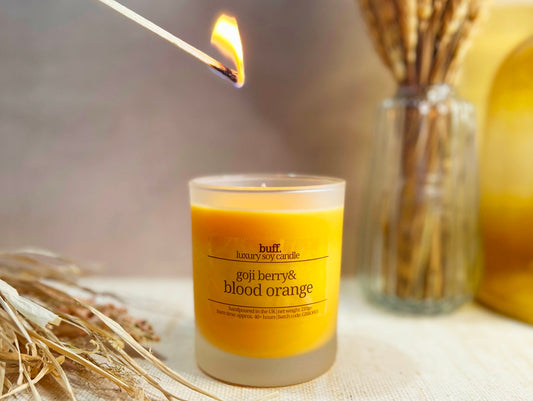In recent years, the demand for vegan soap and plant-based products has soared, with people increasingly seeking ethical and sustainable alternatives in various aspects of their lives. One such area is vegan bath products. By learning how to make your own vegan soap at home, you can ensure its purity, control the ingredients, and contribute to a more eco-friendly lifestyle. Read on to explore the advantages of vegan soap bars, find out common ingredients, and how to make vegan soap at home with a DIY recipe in three easy steps.
What is vegan soap?
Vegan bath products offer several advantages over their conventional counterparts. Firstly, they are devoid of animal-derived ingredients such as beeswax, honey, and tallow, making them suitable for anyone adhering to a vegan lifestyle or those with ethical concerns regarding animal exploitation.
Vegan soap bars are also free from chemicals like parabens and sulphates, which are often found in commercial soaps and can irritate the skin. Instead, the natural body soap rely on plant-based oils and butters that provide natural moisturise, leaving your skin feeling nourished and soft.
While supermarkets and speciality stores offer a wide range of toiletries, making your own eco-friendly soap at home with simple recipes is an empowering and cost-effective alternative. With DIY vegan soap, you have full control over the ingredients used, allowing you to create a personalised product tailored to your skin's needs.
Making vegetarian soap from scratch promotes a sustainable lifestyle by reducing packaging waste associated with store-bought options. It also gives you the opportunity to experiment with different scents, colours, and textures, making your experience with vegan bath products even more enjoyable.
MORE: What is a lip scrub? How to make a DIY homemade sugar scrub
Is vegan soap and natural soap the same thing?
While vegan and natural soaps share some similarities, they are not interchangeable terms. Vegan soap refers specifically to bars that are free from animal-derived ingredients. On the other hand, natural soap refers to toiletries made from naturally occurring ingredients like vegetable oils and botanical extracts and in most cases, can be vegan. Natural soap may or may not be vegan, as it can contain ingredients like goat's milk or honey. Therefore, it's essential to check labels and certifications to ensure the soap aligns with your ethical choices.
The term "cruelty-free" is often associated with vegan bath products, but it is crucial to note that vegan and cruelty-free are not synonymous. Cruelty-free means that the product or its ingredients were not tested on animals. While vegan soap bars are inherently cruelty-free in terms of animal-derived ingredients, some vegan soaps may still undergo animal testing or contain ingredients sourced from companies that test on animals. To ensure your soap is both vegan and cruelty-free, look for certifications such as the Leaping Bunny or PETA's Beauty Without Bunnies logo or to check the PETA website.

Looking for vegan soap and bath products that are cruelty-free? Shop our range of handmade vegan soap made right here in the UK.
Vegan soap ingredients
Making an eco soap bar at home requires a selection of common ingredients that are easily accessible. Some of these ingredients can be found in your kitchen cupboards, while others may need to be purchased from stores specialising in soap-making supplies. Here are a few key components commonly used in easy and a simple vegan soap recipe:
Vegetable oils: Coconut oil, olive oil, and sustainable palm oil are often used as the base oils in hand soap recipes, providing cleansing and moisturising properties.
Essential oils: These natural plant extracts offer a variety of scents and can be used to customise your soap. Popular options include lavender, peppermint, and tea tree oil.
Botanical additions: Dried herbs, flowers, or exfoliants like oats or poppy seeds can be added for texture and visual appeal.
Lye: Lye, also known as sodium hydroxide, is an essential ingredient in the soap-making process. It is used to saponify oils, turning them into body soap. Note that lye should be handled with caution due to its caustic nature.
MORE: How to make natural soap at home - simple and easy recipe guide
How to make vegan soap at home without lye
Melt and pour glycerin vegan soap recipe:
Ingredients:
1 pound of melt and pour glycerin soap base (can check from the supplier it's vegan and by opting for bases without honey and milk)
1 tablespoon of vegetable oil (e.g., coconut oil)
20-30 drops of essential oil of your choice
Natural colourants (optional): beetroot powder, spirulina powder, turmeric
Botanical additions (optional): dried lavender buds, rose petals, ground coffee
Instructions:
Step One: Melting
- Cut the glycerin soap base into small cubes and place them in a microwave-safe bowl.
- Microwave the soap base in 30-second intervals, stirring in between, until fully melted.
- Add the vegetable oil and stir well to combine.
Step Two: Mixing
- Mix in the essential oil and any desired colourants or botanical additions.
- Pour the mixture into soap moulds, gently tapping them to release any air bubbles. Or you can spray rubbing alcohol (70% and above) to disperse bubbles and release surface tension.
Step Three: Unmould
- Allow the soap to cool and harden for several hours or until completely solidified.
- Once solidified, gently remove the vegan soap from the moulds and let it cure for a few weeks in a cool, dry place.
How to make vegan soap with lye:
Cold process vegan soap recipe:
Ingredients:
8 ounces of coconut oil
8 ounces of olive oil
4 ounces of sustainable palm oil (or shea butter)
4.4 ounces of lye (sodium hydroxide)
10 ounces of distilled water
1-2 ounces of essential oil of your choice
Natural colourants (optional)
Botanical additions (optional)
Instructions:
Step One: Heating
- In separate heat-resistant containers, measure the lye and water.
- Slowly pour the lye into the water, stirring very gently and slowly until fully dissolved. Be cautious as the mixture will release heat and fumes. Do not pour the water into the lye, instead, mix the lye in small increments into the water. Lye is a dangerous ingredient to work with when it comes to hand soap making, ensure your skin is covered and you follow all safety precautions. Do not mix or stir too fast as an intense chemical reaction is taking place and it could cause the mixture to get incredibly hot.
- In a separate container, combine the coconut oil, olive oil, and sustainable palm oil. Heat gently until the oils are melted and combined.
Step Two: Mixing
- Let the lye mixture and oil mixture cool to around 100-110°F (38-43°C). It works best when the oils and lye are closer in temperature.
- Slowly pour the lye mixture into the oils, stirring continuously with a spoon or stick blender until the mixture thickens (reaches trace). When using a stick blender it can speed up the solidifying process, so it's best to do short one-two-second bursts at a time before it starts hardening too fast.
- Add the essential oil and any desired colourants or botanical additions, stirring with a silicone spatula.
Step Three: Pouring
- Pour the soap mixture into a soap mould, gently tapping it to release any air bubbles.
- Cover the mould with a towel or plastic wrap and keep it in a cool, dry place for 24-48 hours.
- After the curing period, unmold the soap and let it cure for several weeks, turning it occasionally to allow it to harden and mellow. Lye is still present at this stage so it's not safe to use until it fully cures.
What can you add to vegan soap recipes?
When working with lye in the soap-making process, it is crucial to take safety precautions. Use protective gear such as gloves and goggles, and work in a well-ventilated area. Keep children and pets away from the workspace.
To enhance the appearance and aroma of your vegan soap, you can experiment with various additives. Plant-based colourants like spirulina powder, turmeric, or activated charcoal can impart vibrant hues, while natural ingredients such as dried lavender buds or citrus zest can add texture and visual interest. Mica powders (for soap and cosmetic purposes) can also be vegan and they pack a punch when it comes to adding vibrant and strong colour.
Check with the supplier on whether it's vegan and cruelty-free before adding in the ingredient. Always opt for vegan-friendly additives and perform patch tests if you have sensitive skin.
Once you learn how to make your own vegan soap at home with a simple recipe, it offers a range of benefits, from being environmentally friendly to tailoring the soap to your personal preferences. Organic bath products provide a cruelty-free alternative to animal-derived products while nourishing your skin with natural ingredients. By embracing the art of vegan soap-making, you empower yourself to create a sustainable, ethical, and personalised cleansing experience. Start your journey toward vegan soap mastery and enjoy the satisfaction of a self-made product that supports a kinder world.


